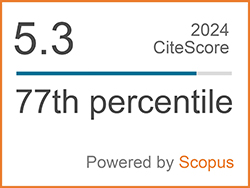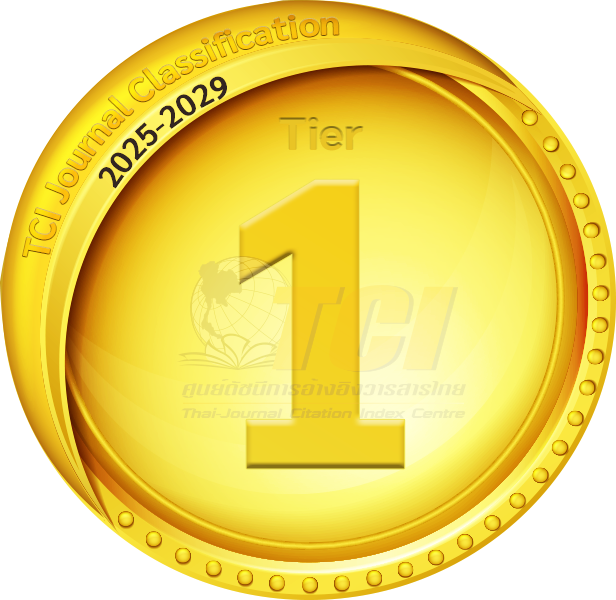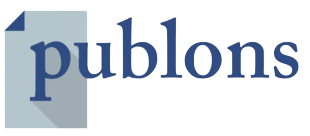Optimization of CO2 Gas Flow rate and Distributor Holes Number for CO2 Capture
Abstract
Keywords
[1] O. Levenspiel, Chemical Reaction Engineering, 3rd ed., New York: John Wiley & Sons, 1999.
[2] H. Kierzkowska-Pawlak, “Determination of kinetics in gas-liquid reaction systems. An overview,” Ecological Chemistry and Engineering S, vol. 19, no. 2, pp. 175–196, Jun. 2012, doi: 10.2478/v10216-011-0014-y.
[3] D. Behvandi, M. Arefizadeh, A. Ghaemi, and S. Shahhosseini, “Evaluation of diffusion and Henry’s coefficients of CO2 absorption using response surface methodology and artificial neural network models,” Case Studies in Chemical and Environmental Engineering, vol. 9, Jun. 2024, Art. no. 100723, doi: 10.1016/ j.cscee.2024.100723.
[4] M. Mutailipu, Y. Song, Q. Yao, Y. Liu, and J. M. Trusler, “Solubility and interfacial tension models for CO2–brine systems under CO2 geological storage conditions,” Fuel, vol. 357, Feb. 2024, Art. no. 129712, doi: 10.1016/j.fuel. 2023.129712.
[5] A. N. Conejo, “Physical and mathematical modelling of mass transfer in ladles due to bottom gas stirring: A review,” Processes, vol. 8, no. 7, pp. 1–23, Jun. 2020, Art. no. 750, doi: 10.3390/pr8070750.
[6] M. H. C. Smith, M. M. V. Ness, Abbott, and M. T. Swihart, Introduction to Chemical Engineering Thermodynamics, 8th ed., New York: McGraw–Hill Education, 2018.
[7] B. Dollet, “Coarsening of foams driven by concentration gradients of gases of different solubilities,” Langmuir, vol. 39, no. 45, pp. 16174–16181, Nov. 2023, doi: 10.1021/acs. langmuir.3c02533.
[8] M. N. Kashid, A. Renken, and L. Kiwi-Minsker, “Gas–liquid and liquid–liquid mass transfer in microstructured reactors,” Chemical Engineering Science, vol. 66, no. 17, pp. 3876–3897, Nov. 2011, doi: 10.1016/j.ces.2011.05.015.
[9] N. Nuryoto, M. H. Alfarizi, M. A. S. Kelana, and R. N. T. Bagaskara, “Alternative technology towards clean and sustainable industry: Conversion of carbon dioxide gas into potassium carbonate,” Advances in Science and Technology Research Journal, vol. 19, no. 4, pp. 183–197, Feb. 2025, doi: 10.12913/22998624/200561.
[10] E. Sari et al., “Synthesis of precipitated calcium carbonate with the addition of aloe vera extract under different reaction temperatures,” International Journal of Applied Science and Engineering, vol. 20, no. 1, pp. 1–7, Mar. 2023, doi: 10.6703/IJASE.202303_20(1).007.
[11] N. Erdogan and H. A. Eken, “Precipitated calcium carbonate production, synthesis and properties,” Physicochemical Problems of Mineral Processing, vol. 53, no. 1, pp. 57–68, Jan. 2017, doi: 10.5277/ppmp170105.
[12] M. A. Baqiya et al., “Precipitation process of CaCO3 from natural limestone for functional materials,” Journal of AOAC International, vol. 103, no. 2, Apr. 2020, doi: 10.5740/jaoacint.19-0256.
[13] J. Tiefenthaler and M. Mazzotti, “Experimental investigation of a continuous reactor for CO2 capture and CaCO3 precipitation,” Frontiers in Chemical Engineering, vol. 4, Feb. 2022, Art. no. 830284, doi: 10.3389/fceng.2022.830284.
[14] P. Ochonma, X. Gao, and G. Gadikota, “Tuning reactive crystallization pathways for integrated CO2 capture, conversion, and storage via mineralization,” Accounts of chemical research, vol. 57, no. 3, pp. 267–274, Jan. 2024,
doi: 10.1021/acs.accounts.3c00482.
[15] V. Bortuzzo, S. Bertagna, L. Braidotti, and V. Bucci, “Towards CO2 emissions reduction of shipping: Ca(OH)2 based carbon capture system for safeguarding the marine environment,” Frontiers in Marine Science, vol. 12, Feb. 2025, Art. no. 1434342, doi: 10.3389/fmars.2025.1434342.
[16] Nuryoto, H. Heriyanto, L. Rahmawati, and H. Julvita, “Transforming greenhouse gases: CO₂ conversion into high–value precipitated calcium carbonate (pcc) (original title: Transformasi gas rumah kaca: Mengubah CO2 menjadi bahan bernilai tinggi berupa precipitated calcium carbonate (pcc)),” Jurnal Sains dan Teknologi, vol. 23, no. 2, pp. 205–216, Jul. 2024,
doi:10.23887/jstundiksha.v13i2.79553.
[17] N. Zhenqi, G. Yincheng, and L. Wenyi, “Experimental studies on CO2 capture in a spray scrubber using NaOH solution,” presented at the International Conference on Energy and Environment Technology, Guilin, China, Oct. 16–18, 2009.
[18] M. Bagi, M. V. Razlighi, M. Shanbedi, and A. Karim, “A comprehensive parametric study on CO2 removal from natural gas by hollow fiber membrane contactor: A computational fluid dynamics approach,” Chemical Engineering & Technology, vol. 47, no. 4, pp. 732–738, Feb. 2024, doi: 10.1002/ceat.202300504.
19] Y. Ihsana, P. A. Rama, R. Puspita, S. Winardi, and T. Nurtono, “Bubble column application on purification of biogas and production of nano-calcium carbonate in continuous process,” Malaysian Journal of Fundamental and Applied Sciences, vol. 16, no. 3, pp. 286–291, Jun. 2020, doi: 10.11113/mjfas.v16n3.1567.
[20] Y. Wang et al., “Investigation of mass transfer characteristics under turbulent condition in adsorption separation process for CO2 capture,” Journal of Environmental Chemical Engineering, vol. 10, no. 1, Jan. 2022, Art. no. 107106, doi: 10.1016/j.jece.2021.107106.
[21] Q. Wehrung et al., “Impact of operational parameters on the CO2 absorption rate in Ca(OH)2 aqueous carbonation─implications for process efficiency,” Energy & Fuels, vol. 38, no. 17, pp. 16678–16691, Aug. 2024, doi: 10.1021/ acs.energyfuels.4c0245.
[22] F. Bai and Y. Lu, “Effects of impurities on anthropogenic CO2 pipeline transport,” Energy & Fuels, vol. 38, no. 11, pp. 9958–9966, May 2024, doi: 10.1021/acs.energyfuels.4c00935.
[23] J. Lefebvre, S. Bajohr, and T. Kolb, “Modeling of the transient behavior of a slurry bubble column reactor for CO2 methanation, and comparison with a tube bundle reactor,” Renewable energy, vol. 151, pp. 118–136, May 2020, doi: 10.1016/j.renene.2019.11.008.
[24] X. Li, A. Lyngfelt, D. Pallares, C. Linderholm, and T. Mattisson, “Investigation on the performance of volatile distributors with different configurations under different fluidization regimes,” Energy & Fuels, vol. 36, no. 17, pp. 9571–9587, Jan. 2022, doi: 10.1021/acs.energyfuels.1c04159.
[25] B. H. Kim, J. H. Kim, P. S. Kang, S. K. Yoo, H. C. Yoo, and E. S. Lee, “Gas distributor for removing carbon dioxide through head pressing,” South Korea Patent, KR101140774B, Jul. 02, 2012.
[26] I. K. Rind, A. Sarı, M. Tuzen, M. F. Lanjwani, and T. A. Saleh, “Development of fly ash/ melamine composites for crystal violate dye removal from aqueous media,” Environmental Nanotechnology, Monitoring & Management, vol. 23, Jun. 2025, Art. no. 101056, doi: 10.1016/ j.enmm.2025.101056.
[27] L. Minkowicz, A. Dagan, V. Uvarov, and O. Benny, “Controlling calcium carbonate particle morphology, size, and molecular order using silicate,” Materials, vol. 14, no. 13, Jun. 2021, Art. no. 3525, doi: 10.3390/ma14133525.
[28] R. A. Boulos, F. Zhang, E. S. Tjandra, A. D. Martin, D. Spagnoli, and C. L. Raston, “Spinning up the polymorphs of calcium carbonate,” Scientific Report, vol. 4, Jan. 2014, Art. no. 3616, doi: 10.1038/srep03616.
[29] R. Febrida et al., “Synthesis and characterization of porous CaCO3 vaterite particles by simple solution method,” Materials, vol. 14, no. 16, Aug. 2021, Art. no. 4425, doi: 10.3390/ma14164425.
[30] E. Altay, T. Shahwan, and M. Tanoğlu, “Morphosynthesis of CaCO3 at different reaction temperatures and the effects of PDDA, CTAB, and EDTA on the particle morphology and polymorph stability,” Powder Technology, vol. 178, no. 3, pp. 194–202, Sept. 2007, doi: 10.1016/j.powtec.2007.05.004.
[31] W. Nagaki, N. Doki, M. Yokota, K. Yamashita, T. Kojima, and T. Tanaka, “Control of crystal size and morphology of calcium carbonate crystal polymorphism,” Journal of Materials Science and Chemical Engineering, vol. 9, no. 4, pp. 38–45, Apr. 2021, doi: 10.4236/msce.2021. 94005.
[32] N. Naldi, S. Arief, R. Desmiarti, E. Sari, and E. R. Desfitri, “Removal of chlorine content in precipitated calcium carbonate (pcc) through washing and filtration processes (original title: Penghilangan kadar klorine pada precipitate calcium carbonate (pcc) dengan proses pencucian dan filtrasi,” Eksergi, vol. 20, no. 3, pp. 200–209, Nov. 2023, doi: 10.31315/e.v20i3. 9684.
[33] R. Ševčík, P. Šašek, and A. Viani, “Physical and nanomechanical properties of the synthetic anhydrous crystalline CaCO3 polymorphs: Vaterite, aragonite and calcite,” Journal of materials science, vol. 53, no. 6, pp. 4022–4033, Dec. 2018, doi: 10.1007/s10853-017-1884-x.
[34] L. Pastero, E. Costa, M. Bruno, M. Rubbo, G. Sgualdino, and D. Aquilano, “Morphology of calcite (CaCO3) crystals growing from aqueous solutions in the presence of Li+ ions. Surface behavior of the {0001} form,” Crystal growth & design, vol. 4, no. 3, pp. 485–490, Mar. 2004, doi: 10.1021/cg034217r.
[35] B. Zafar, J. Campbell, J. Cooke, A. G. Skirtach, and D. Volodkin, “Modification of surfaces with vaterite CaCO3 particles,” Micromachines, vol. 13, no. 3, p. 473, Mar. 2022, doi: 10.3390/mi130 30473.
[36] S. G. Lyu, S. Park, and G. S. Sur, “The synthesis of vaterite and physical properties of PP/CaCO3 composites,” Korean Journal of Chemical Engineering, vol. 16, no. 4, pp. 538–542, Jul. 1999, doi: 10.1007/BF02698281.
[37] T. Enomae and K. Tsujino, “Application of spherical hollow calcium carbonate particles as filler and coating pigment,” TAPPI Journal, vol. 3, no. 6, pp. 493–493, Jun. 2004.
[38] Pucerment resource. “Calcium carbonate price trend and forecast: Calcium carbonate regional price overview.” procurementresource.com. Accessed: Jul. 18, 2025. [Online]. Available: https://www.procurementresource.com/resource-center/calcium-carbonate-price-trends
[39] Made in china. “Calcium carbonate price pcc.” made-in-china.com. Accessed: Jul. 18, 2025. [Online]. Available: https://www.made-in-china.com/price/prodetail_Carbonate
[40] I. Raheem et al., “A comprehensive review of approaches in carbon capture, and utilization to reduce greenhouse gases,” Applied Science and Engineering Progress, vol. 18, no. 2, Apr. 2025, Art. no. 7629, doi: 10.14416/j.asep.2024.11.004.
DOI: 10.14416/j.asep.2025.09.007
Refbacks
- There are currently no refbacks.
 Applied Science and Engineering Progress
Applied Science and Engineering Progress







